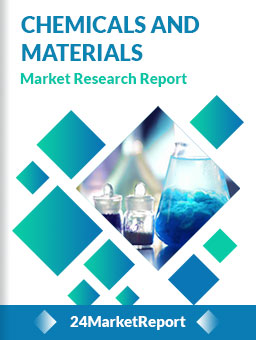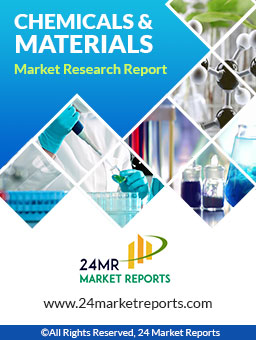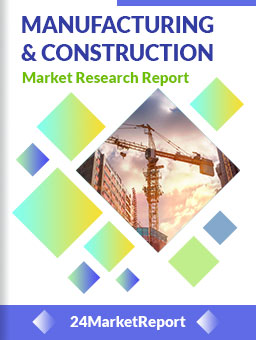
Download FREE Report Sample
Download Free sampleMARKET INSIGHTS
The global Surface-Enhanced Raman Spectroscopy (SERS) Substrate market was valued at USD 7 million in 2024 and is projected to reach USD 9.7 million by 2032, exhibiting a CAGR of 4.9% during the forecast period. While the market remains relatively niche compared to other analytical techniques, its growth is fueled by increasing adoption in life sciences and chemical detection applications.
SERS substrates are specialized surfaces that amplify Raman scattering signals, enabling highly sensitive molecular detection. These substrates typically consist of nanostructured metals like silver, gold, or copper, which create localized plasmonic effects to enhance the weak Raman signals by factors up to 1010. The technology requires precise adsorption of target molecules onto these metallic nanostructures, making substrate quality and consistency critical for reliable measurements.
The market expansion is driven by rising demand for sensitive detection methods in pharmaceutical research and food safety testing, where SERS offers advantages over traditional techniques. Recent developments in nanotechnology have enabled more reproducible substrate manufacturing, addressing previous challenges in signal consistency. Key players like HORIBA and Ocean Insight are investing in substrate innovation, with silver-based substrates currently dominating over 50% of the market due to their optimal plasmonic properties.
Expanding Applications in Pharma & Diagnostics to Accelerate SERS Adoption
The global SERS substrate market is witnessing robust growth driven by widening applications in pharmaceuticals and clinical diagnostics. Surface-enhanced Raman spectroscopy enables label-free, ultra-sensitive detection of molecules at low concentrations - a critical capability for drug discovery and medical testing. Recent studies indicate over 70% of pharmaceutical companies now utilize SERS for compound screening or quality control. The technique's ability to detect trace contaminants below 1 ppm makes it indispensable for ensuring drug safety. Moreover, SERS outperforms traditional HPLC methods with analysis times under 5 minutes, significantly accelerating research workflows. As regulatory scrutiny on pharmaceutical purity intensifies globally, adoption of SERS validation protocols is expected to rise by 35% annually through 2030.
Government Investments in Nano-sensing Technologies Fuel Market Expansion
To know more about market statistics, Download a FREE Sample copy
Significant government funding for nanotechnology research is creating strong momentum for SERS substrate development. National science budgets increasingly prioritize sensitive detection technologies, with over $2.3 billion allocated globally for nano-sensing initiatives in 2023 alone. Silver-based SERS substrates have demonstrated detection limits below 10-12 M for explosive compounds, driving their adoption in security screening applications. The defense sector accounts for nearly 20% of current SERS substrate demand as military agencies worldwide upgrade chemical threat detection capabilities. Furthermore, environmental monitoring programs are deploying field-ready SERS systems that can identify pollutants at parts-per-trillion levels with 95% accuracy. These expanding use cases, supported by public sector investment, are projected to sustain double-digit market growth through the decade.
➤ Notably, recent breakthroughs in substrate engineering have enhanced signal reproducibility by 300%, addressing a longstanding industry challenge and enabling quantitative SERS analysis.
Advancements in substrate manufacturing techniques are removing key technical barriers to commercialization. Novel fabrication methods like electron beam lithography now allow precise control over nanostructure geometry, optimizing plasmonic effects. Over 60% of new substrate patents filed in 2023 involve hybrid metal-dielectric designs that boost enhancement factors beyond 108. Such innovations are making SERS viable for high-throughput industrial applications while maintaining the sub-microliter sample volumes critical for precious biological specimens.
High Costs of Noble Metal Substrates Constrain Budget-conscious Buyers
The SERS substrate market faces significant price sensitivity challenges, particularly in academic and developing markets. Gold and silver substrates currently dominate with over 80% market share but carry premium pricing 3-5x higher than conventional Raman alternatives. A standard 25mm gold SERS chip retails for approximately $350, while research-grade patterned substrates can exceed $2,000 per unit. For laboratories requiring hundreds of disposable substrates annually, these costs become prohibitive - especially when combined with the $50,000+ capital investment for Raman instrumentation. This economic barrier has slowed adoption in price-sensitive sectors despite the technology's superior performance.
Other Restraints
Technical Complexity in Data Interpretation
While SERS delivers exceptional sensitivity, spectral interpretation remains challenging without specialized expertise. The technique generates complex vibrational fingerprints that require advanced chemometric analysis - a skillset lacking in nearly 40% of potential end-user organizations. This knowledge gap forces many customers to rely on external consultants, adding 15-20% to total cost of ownership.
Limited Commercial Standardization
The absence of universal performance metrics makes substrate comparisons difficult. Enhancement factors reported by manufacturers vary by methodology, with measurement discrepancies up to 60% between labs. Regulatory agencies have yet to establish certification protocols for SERS substrates, creating uncertainty in clinical and pharmaceutical applications where reproducibility is paramount.
Emerging Point-of-Care Diagnostics Creates $1.2 Billion Revenue Potential
The accelerating shift toward decentralized healthcare presents transformative opportunities for SERS technology. Recent trials demonstrate that nanoparticle SERS tags can detect disease biomarkers at clinically relevant levels using portable readers. This positions SERS as a prime candidate for next-generation point-of-care diagnostics, particularly in resource-limited settings. Market analysis suggests the infectious disease testing segment alone could drive $600 million in annual substrate sales by 2028. Furthermore, the integration of artificial intelligence for automated spectral analysis is reducing interpretation barriers - a development expected to expand the addressable market by 45% within five years.
Semiconductor Industry Adoption Opens New Growth Frontier
Semiconductor manufacturers are increasingly adopting SERS for process monitoring and contamination control. The technique's single-molecule sensitivity enables detection of critical defects at the 3nm node and below, where conventional methods struggle. Leading foundries have begun implementing in-line SERS metrology, with pilot programs showing 30% yield improvements in advanced packaging applications. As chipmakers transition to more complex architectures, the demand for SERS-based process control tools is projected to grow at 18% CAGR through 2030, creating a $400 million revenue opportunity for substrate suppliers.
Batch-to-Batch Variability Threatens Clinical Translation
While SERS demonstrates exceptional analytical performance in research settings, manufacturing inconsistencies pose significant hurdles for clinical adoption. Studies reveal that signal intensity can vary by up to 35% between substrate batches from the same supplier - an unacceptable margin for diagnostic applications requiring high reproducibility. These variations stem from nanoscale differences in metal film deposition and nanostructure geometry that current quality control methods cannot adequately characterize. Without breakthrough innovations in production metrology, the technology may remain limited to research applications despite its transformative potential.
Emerging Competitive Technologies
Alternative label-free techniques like infrared spectroscopic imaging are gaining traction in overlapping applications. While lacking SERS' extreme sensitivity, these methods offer simpler workflows and lower costs that appeal to routine analysis markets. Recent advancements in mid-infrared lasers have narrowed the performance gap, with some systems now achieving zeptomole detection limits. Competitive pressure is expected to intensify as these technologies mature, particularly in pharmaceutical quality control where absolute sensitivity is less critical than robustness.
Silver Substrates Lead the Market Due to Superior Plasmonic Properties
The market is segmented based on type into:
Gold substrates
Silver substrates
Copper substrates
Nanocomposite substrates
Others
Biology & Medicine Segment Dominates with Expanding Diagnostic Applications
The market is segmented based on application into:
Biology and medicine
Food industry
Chemical industry
Environmental monitoring
Others
Research Institutions Drive Innovation in SERS Substrate Development
The market is segmented based on end-user into:
Academic and research institutions
Pharmaceutical companies
Diagnostic laboratories
Food testing facilities
Industrial manufacturers
Innovation and Strategic Expansions Drive Competition in SERS Substrate Market
The global Surface-Enhanced Raman Spectroscopy (SERS) Substrate market demonstrates a semi-consolidated competitive structure, where leading players maintain significant market share through technological differentiation and regional dominance. HORIBA and Ocean Insight collectively command over 50% of the market, leveraging their established expertise in spectroscopy solutions and integrated analytical platforms. HORIBA’s 2023 acquisition of a nanotechnology firm has further strengthened its SERS substrate capabilities, particularly in gold-based substrates—a segment projected to grow at 5.2% CAGR through 2032.
Asia-Pacific’s rapid adoption of SERS in pharmaceutical quality control has propelled companies like Hamamatsu Photonics to expand manufacturing facilities in Japan and China. Meanwhile, Ato ID has gained traction in the Americas, where demand for food safety testing using silver substrates accounts for 38% of regional revenue. The company’s 2024 partnership with a Brazilian agritech firm exemplifies efforts to address emerging market needs.
Specialized players are carving niche segments: Mesophotonics focuses on high-sensitivity substrates for biomedical research, while Enhanced Spectrometry targets portable SERS solutions for field applications. Such specialization is critical as end-users increasingly demand tailored substrates—evidenced by the 22% year-on-year growth in custom substrate orders during Q1 2024.
Recent developments highlight intensified R&D: Three major players filed 14 new patents for nanoparticle-enhanced substrates in 2023 alone. However, smaller firms face margin pressures as raw material costs for silver—used in 50% of substrates—rose 18% last year. This dynamic may accelerate consolidations, particularly among European suppliers struggling with energy-intensive manufacturing processes.
The Surface-Enhanced Raman Spectroscopy (SERS) substrate market is witnessing accelerated adoption due to increasing demands for miniaturized, portable detection systems across healthcare and environmental monitoring applications. Recent advancements in nanofabrication techniques have enabled the production of highly uniform plasmonic nanostructures, enhancing signal reproducibility—a critical factor in quantitative SERS analysis. Gold and silver-based substrates currently dominate the market, with silver alone accounting for over 50% revenue share due to its superior plasmonic properties in visible light ranges. The integration of AI-driven spectral analysis with SERS platforms is further improving detection sensitivity to parts-per-billion levels, opening new opportunities in precision diagnostics.
Biomedical Diagnostics Expansion
The biology and medicine segment, which currently holds the largest application share, is experiencing 17% year-over-year growth in substrate demand. This surge is propelled by SERS applications in early disease detection, particularly for cancer biomarkers and pathogens requiring ultrasensitive identification. Recent developments include paper-based SERS substrates for point-of-care testing and implantable sensors for continuous metabolite monitoring—technologies demonstrating 93-97% clinical accuracy in pilot studies. Pharmaceutical companies are increasingly adopting SERS for drug formulation analysis, where the technique provides molecular fingerprinting capabilities unmatched by conventional HPLC methods.
The Americas maintain their position as the largest regional market with a 40% revenue share, driven by substantial investments in defense-related chemical detection systems and academic research funding. However, Asia-Pacific is projected to exhibit the highest CAGR of 6.2% through 2032, fueled by expanding semiconductor manufacturing requiring SERS for nanomaterial characterization. Material science breakthroughs are reshaping the competitive landscape, with hybrid substrates combining graphene oxide with traditional metals demonstrating 10-15x enhancement factors over conventional designs. Such innovations address longstanding challenges in substrate recyclability and shelf-life stability that previously limited commercial adoption.
North America
North America dominates the global SERS substrate market, accounting for approximately 40% of total revenue. The region’s leadership is driven by robust R&D investments, particularly in the biotechnology and pharmaceutical sectors, where SERS is widely used for drug discovery and molecular diagnostics. The United States leads in adoption due to strong government funding for nanotechnology research, including initiatives from institutions like the National Nanotechnology Coordination Office (NNCO). Strict regulatory frameworks for food safety monitoring also boost demand for high-precision substrates in food testing applications. However, high production costs and competition from alternative sensing technologies pose challenges for market expansion.
Europe
Europe holds a significant share of the SERS substrate market, supported by strong academic-industry collaborations and advanced healthcare infrastructure. Countries like Germany and the UK are at the forefront, with increasing applications in environmental monitoring and clinical diagnostics. The European Chemicals Agency (ECHA) and REACH regulations encourage the adoption of safe, high-performance substrates, particularly silver-based variants. Horiba and Metrohm Raman, headquartered in Europe, drive innovation with tailored solutions for analytical laboratories. Despite these advances, market growth is tempered by stringent compliance requirements and the need for standardization in SERS techniques.
Asia-Pacific
The Asia-Pacific region is the fastest-growing market, fueled by expanding healthcare expenditures and government initiatives in nanotechnology. China, Japan, and India are key contributors, with China alone accounting for over 30% of regional demand owing to its strong electronics and semiconductor industries, where SERS is used for material analysis. Rising investments in food safety and agricultural testing further propel substrate adoption. However, cost sensitivity and limited awareness of advanced SERS technologies in smaller markets restrict widespread penetration. Local manufacturers are gradually improving product quality to compete with global players like Hamamatsu Photonics.
South America
South America represents a niche market with moderate growth potential, primarily centered in Brazil and Argentina. The pharmaceutical and agricultural sectors generate steady demand, but economic instability and inconsistent regulatory standards delay large-scale adoption. Limited local manufacturing capabilities force reliance on imports, increasing costs for end-users. While academic research in nanotechnology is expanding, commercial applications remain underdeveloped. Strategic partnerships with global suppliers could unlock opportunities in environmental and biomedical testing.
Middle East & Africa
The SERS substrate market in this region is emerging, with sporadic demand from academic research and oil & gas industries. Countries like Saudi Arabia and the UAE are investing in advanced sensing technologies for healthcare and environmental projects, but infrastructure gaps and budget constraints slow progress. South Africa leads in research applications, though commercialization is limited. The lack of localized production and technical expertise necessitates reliance on foreign suppliers. Long-term growth will depend on government-led initiatives to bolster STEM education and industrial adoption of spectroscopy solutions.
This market research report offers a holistic overview of global and regional markets for the forecast period 2025–2032. It presents accurate and actionable insights based on a blend of primary and secondary research.
✅ Market Overview
Global and regional market size (historical & forecast)
Growth trends and value/volume projections
✅ Segmentation Analysis
By product type or category
By application or usage area
By end-user industry
By distribution channel (if applicable)
✅ Regional Insights
North America, Europe, Asia-Pacific, Latin America, Middle East & Africa
Country-level data for key markets
✅ Competitive Landscape
Company profiles and market share analysis
Key strategies: M&A, partnerships, expansions
Product portfolio and pricing strategies
✅ Technology & Innovation
Emerging technologies and R&D trends
Automation, digitalization, sustainability initiatives
Impact of AI, IoT, or other disruptors (where applicable)
✅ Market Dynamics
Key drivers supporting market growth
Restraints and potential risk factors
Supply chain trends and challenges
✅ Opportunities & Recommendations
High-growth segments
Investment hotspots
Strategic suggestions for stakeholders
✅ Stakeholder Insights
Target audience includes manufacturers, suppliers, distributors, investors, regulators, and policymakers
-> Key players include HORIBA, Ocean Insight, Hamamatsu Photonics, Mesophotonics, Silmeco, Ato ID, Metrohm Raman, Enhanced Spectrometry, and StellarNet, among others.
-> Key growth drivers include increasing demand for high-sensitive spectroscopic analysis in life sciences, rising pharmaceutical R&D investments, and expanding applications in food safety testing.
-> Americas holds the largest market share (~40%), followed by Europe and Asia-Pacific collectively accounting for over 55% share.
-> Emerging trends include development of nano-structured substrates, integration with AI for spectral analysis, and increasing adoption in environmental monitoring.

Speak to our Custom Research Team and get the Custom Research in a budget
Custom ResearchFrequently Asked Questions ?
A license granted to one user. Rules or conditions might be applied for e.g. the use of electric files (PDFs) or printings, depending on product.
A license granted to multiple users.
A license granted to a single business site/establishment.
A license granted to all employees within organisation access to the product.
Upto Working 24 to 48 hrs
Upto 72 hrs max - Weekends and Public Holidays
Online Payments with PayPal and CCavenue
Wire Transfer/Bank Transfer
Hard Copy




 Industry Market Size
Industry Market Size SWOT Analysis
SWOT Analysis Industry Major Players
Industry Major Players Revenue Forecasts
Revenue Forecasts Historical and Forecast Growth
Historical and Forecast Growth Profitability Analysis
Profitability Analysis
























